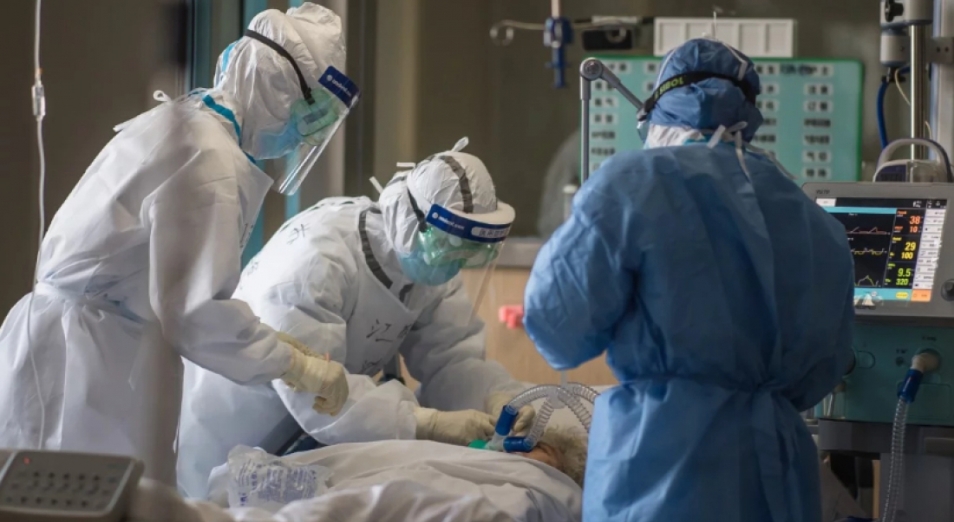16 Kazakhstani children have Kawasaki-like syndrome confirmed
A regular briefing of Bagdat Kodjakhmetov, the Official Representative of the Ministry of Health was held at the Central Communications Service on August 24, 2020, in Nur-Sultan. He informed the population about the epidemiological situation in the country, the mitigation of quarantine measures, and also spoke with the country’s chief pediatrician Riza Boranbaeyva about the multisystem inflammatory syndrome – Kawasaki syndrome.
According to the official representative, over the past three weeks, the situation with the incidence of coronavirus infection and pneumonia in Kazakhstan has stabilized.
“If from August 3 to August 9, 7,108 people were infected with coronavirus infection, 222 died. 7,940 people were infected with pneumonia, 122 died, then from August 10 to 16, the diagnosis of CVI + was confirmed in 3,995 people, and CVI minus in 5,344 people. 151 and 64 people died. Over the past week – from 17 to 23 August, COVID-19 was confirmed in 1,685 people, pneumonia – in 4,138 patients. 108 people died with a positive PCR test and 40 with a diagnosis of pneumonia, ”B. Kodzhakhmetov cited statistics.
At the same time, he recalled, since August 24, quarantine has continued to weaken in the country, but a lockdown will remain on the weekend of August 29 and 30.
“This is necessary in order to finally break the chain of the spread of infection and reduce the incidence to a minimum,” the Official said.
Riza Boranbayeva, the country’s chief pediatrician, head of the Scientific Center for Pediatrics and Pediatric Surgery, took part in the briefing via video communication. She spoke about a new disease called multisystem inflammatory syndrome, which appeared in April-May 2020 in countries where there was a high incidence of COVID-19 in children.
“Multisystem inflammatory syndrome temporarily associated with COVID-19 in children and adolescents is a delayed immunological event associated with inflammation following previous COVID-19 infection. This pathology is more of a post-infectious syndrome that develops in children 3-5 weeks after COVID-19, as evidenced by the detection of antibodies in the blood of such patients. Another name for MBS is Kawasaki, a similar syndrome, as it has clinical similarities to Kawasaki disease, although there are some differences. The main one is that Kawasaki disease develops only in early childhood, and AIM is also recorded in adolescents and young people under 21 years of age. Kawasaki’s disease is a very rare pathology all over the world, in Kazakhstan 2-5 cases were detected annually, ”R.Boranbaeva said.
The country’s chief pediatrician stressed that AIM is not a massive disease in children after COVID-19. And only a few children can show clinical symptoms similar to Kawasaki disease, which can be severe. At the same time, early diagnosis and timely therapy are important for the successful treatment of AIM.
“As of August 23, 2020, a total of 16 cases of AIM in children were diagnosed in the republic, of which 8 children were discharged with a favorable outcome, the rest are being treated in multidisciplinary children’s hospitals,” the head of the Scientific Center for Pediatrics and Pediatric Surgery informed.
It is important that if a child is suspected of having AIM, a child associated with COVID-19 must be admitted to a multidisciplinary children’s hospital, where he will receive a full range of diagnostic measures and the necessary therapy. Diagnosis and treatment of patients with Kawasaki-like syndrome is carried out by a multidisciplinary team of specialists of various pediatric profiles: infectious disease specialists, rheumatologists, cardiologists, hematologists, resuscitators. Early diagnosis and timely medical care in most cases lead to a favorable outcome and recovery of the child.
The main clinical symptoms of Kawasaki syndrome are:
the presence of a temperature above 38.50 C for 24 hours or more;
damage to the gastrointestinal tract – abdominal pain, vomiting, nausea, diarrhea;
in 50% there may be damage to the respiratory system – cough, shortness of breath due to the development of severe pneumonia;
a rash on the body of varying severity, spotty, maculopapular;
possible conjunctivitis, enlarged lymph nodes, swelling of the palms, feet;
cardiovascular symptoms in the form of pain in the region of the heart, behind the breastbone;
red, crimson tongue, redness of the lips.
Media center
of Ministry of Health of the Republic of Kazakhstan


